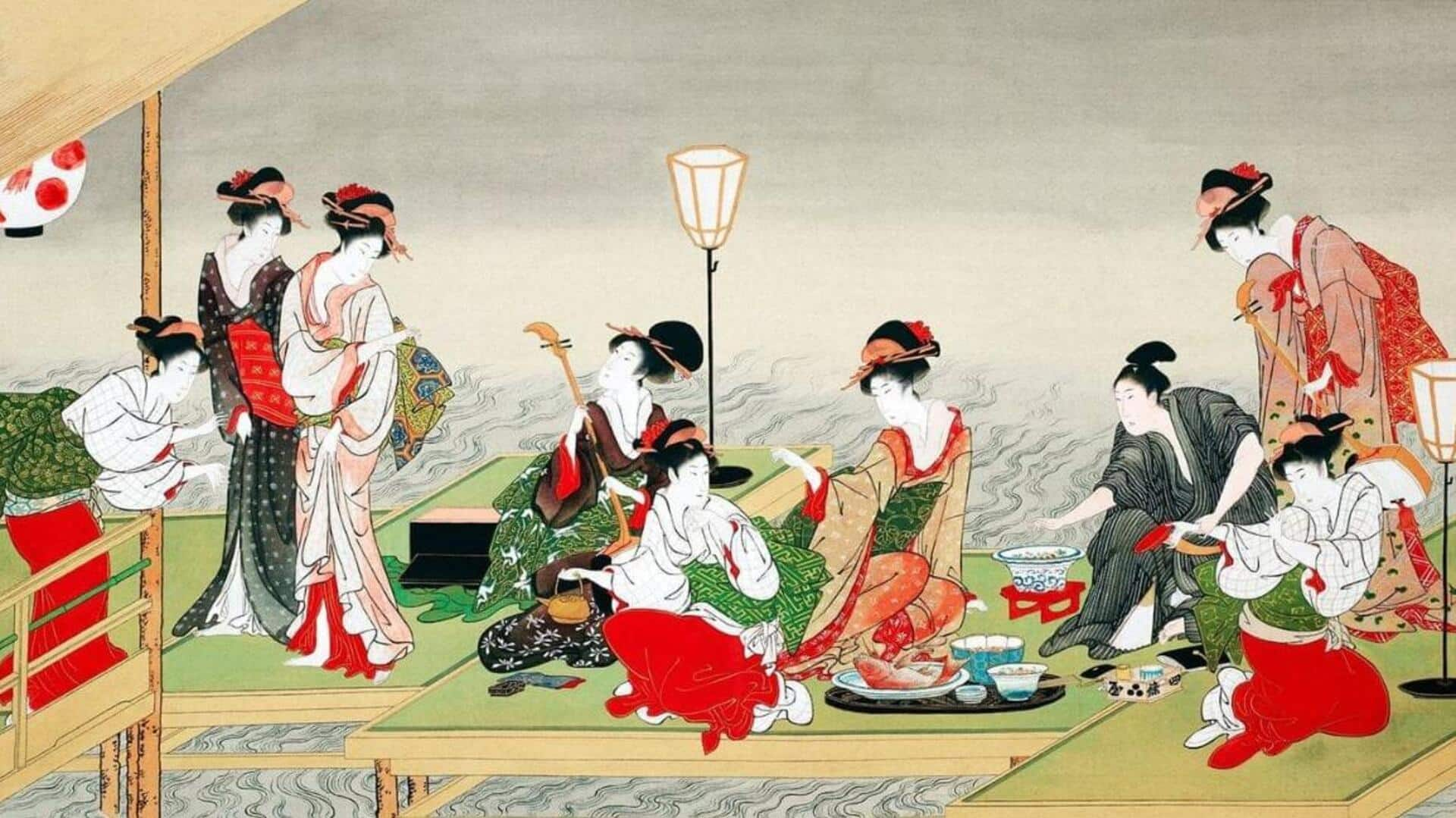
5 fascinating facts about Japanese folk art traditions
What's the story
Japanese folk art traditions are a fascinating confluence of history, culture, and craftsmanship. Passed down generations, these traditions embody the unique aesthetics and values of Japanese society. From intricately crafted textiles to delicate ceramics, each piece narrates a tale of its own. Here are five intriguing aspects of these folk art traditions that continue to inspire and influence artists across the globe.
#1
The beauty of Kintsugi
Kintsugi is the art of repairing broken pottery with lacquer mixed with powdered gold, silver, or platinum. This technique not only restores functionality but also highlights the cracks as part of the object's history. Originating in the 15th century, kintsugi embodies the philosophy that imperfections can be beautiful. It encourages embracing flaws rather than hiding them, making each repaired piece unique and more valuable.
#2
Intricacies of Temari balls
Temari balls are Japanese embroidered balls made from pieces of old kimonos. Originally designed as toys for kids, they have now become intricate works of art denoting friendship and loyalty. Every temari ball is hand-stitched with colorful threads making geometric patterns. The craft requires precision and patience, something that reflects the Japanese culture's appreciation of detail.
#3
The craftsmanship behind Bizen pottery
One of Japan's oldest ceramic traditions, Bizen pottery dates back more than 1,000 years. Renowned for its rustic look (unlike others, Bizen ware is unglazed and undecorated), this pottery relies on natural ash deposits during firing to create unique textures and colors. Focused on simplicity and natural beauty, Bizen pottery reveals the exceptional skill of artisans who often spend decades mastering their craft.
#4
Symbolism in Kokeshi dolls
Kokeshi dolls, wooden dolls from northern Japan, are used as souvenirs or gifts representing good luck or protection. These dolls have a cylindrical body and a round head, painted with simple facial features in bright colors on the black hairline. The different styles of each region reflect local customs through variations in their shape and size, making them collectible for their cultural and historical significance.
Tip 5
The tradition of indigo dyeing
Indigo dyeing is an ancient Japanese practice that ensures textiles and home goods are imbued with stunning blue hues. The process uses fermented leaves of the indigo plant to create a dye bath. Fabrics are dipped repeatedly into the dye bath to get the desired color depth. The number of dips and exposure to air in between cycles determines the color's intensity, giving vibrant, durable colors that don't fade or wash away easily.